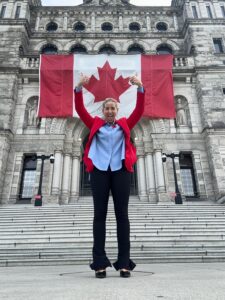
Model incentivizing high volume of patients is also contributing to B.C.’s family doctor shortage, report says
CBC News · Nov 12, 2021

The payment model for family doctors in B.C. is deterring aspiring physicians from pursuing the work and contributing to the ongoing family doctor shortage in the province, according to a report released Friday.
The report, published in the Canadian Family Physician Journal, found up-and-coming family doctors are choosing more hospital-based work and specialized practice rather than family medicine — in part because they’re worried about the consequences of B.C.’s fee-for-service model.
Under the payment model, doctors and hospitals are paid by the province for each office visit, test or operation. To stay afloat, they need to continuously work through a high-volume of patients and run a business at the same time.
“The problem with this type of payment is that it requires the family doctor to do everything related to the patient’s care — the medical care, the nursing care and the administrative work,” said Dr. Goldis Mitra, a family physician and assistant professor who co-authored the report.
“As patients have become increasingly complex, it’s becoming clear that it’s not working for patients or for providers.”
Most family doctors in B.C. are paid about $30 per patient visit — whether they’re treating a straightforward common cold or a complex chronic health problem.
Physicians run their practice as a business, paying out overhead costs like staff and office space at an average rate of about $60 per hour or more.
Many would prefer to be part of a team: report
The report — which interviewed 63 young doctors across three provinces, including B.C. — found many respondents would prefer alternative funding models.
“Many of the doctors we spoke to said they wanted to go into [an] office-based practice — so, they wanted to be what we think of as the traditional family doctor — but they avoided going into this type of practice because fee-for-service, in some ways, prevented them from providing the care they felt their patients needed and deserved,” said Mitra.
She said many would prefer to work as part of a team of health-care practitioners like nurses, physiotherapists and social workers.
They would also have help from administrative workers to take care of tasks that come with running a business. The province would fund the clinic and the health practitioners would be paid a salary.
“This allows the family doctor to focus on the medical care: prevention, diagnosis and treatment of disease,” said Mitra, who is also a clinical assistant professor in the Department of Family Practice at the University of British Columbia.
In the places where these models have worked well, Mitra said, there are risk-adjusted payment models in place, meaning the clinics are funded and supported more to care for more complex patients.
“We know that everybody needs a family doctor, but especially some of the patients who are sickest and needs the most care,” she said.
The authors of the report, including Mitra, are part of a team of health policy researchers who are looking at how early-career family doctors are choosing to work and why. The doctors they interviewed were from B.C., Ontario and Nova Scotia.
In May 2020, the College of Family Physicians of Canada also called for alternative funding models to replace the fee-for-service method to better support continuity of care and stop family doctors from leaving their jobs.
In a statement, the Ministry of Health said there are alternative physician compensation models available to B.C. doctors, like contracts with the ministry and health authorities. It said the budget for alternative funding represents about 20 per cent of the overall compensation available for physicians in B.C.
Mitra said that was a good step, but the province needs more “clear and sustained” investments.
LISTEN | Dr. Goldis Mitra explains the fee-for-service model and its shortcomings
7:59 minutes
Article from: https://www.cbc.ca/news/canada/british-columbia/fee-for-service-model-family-doctors-1.6247049





